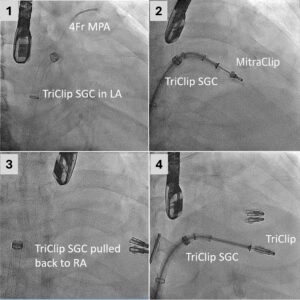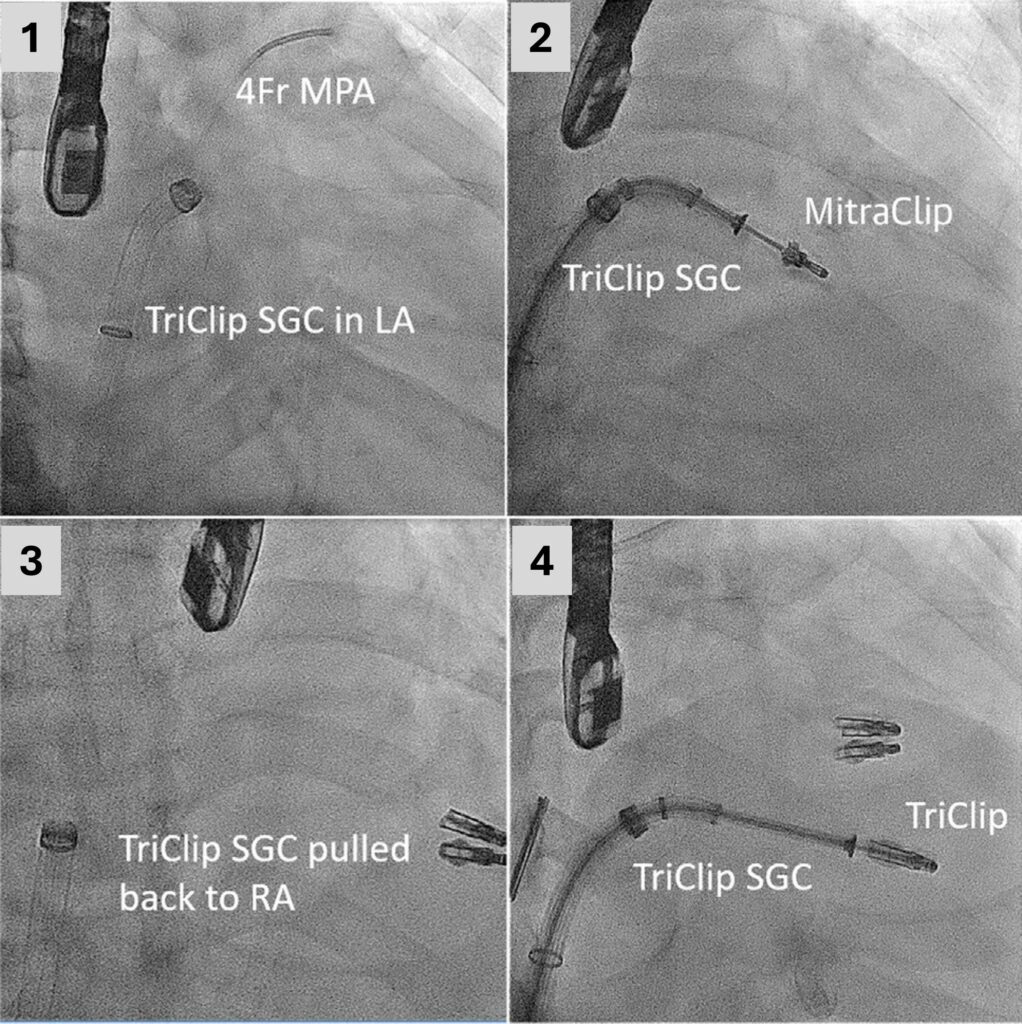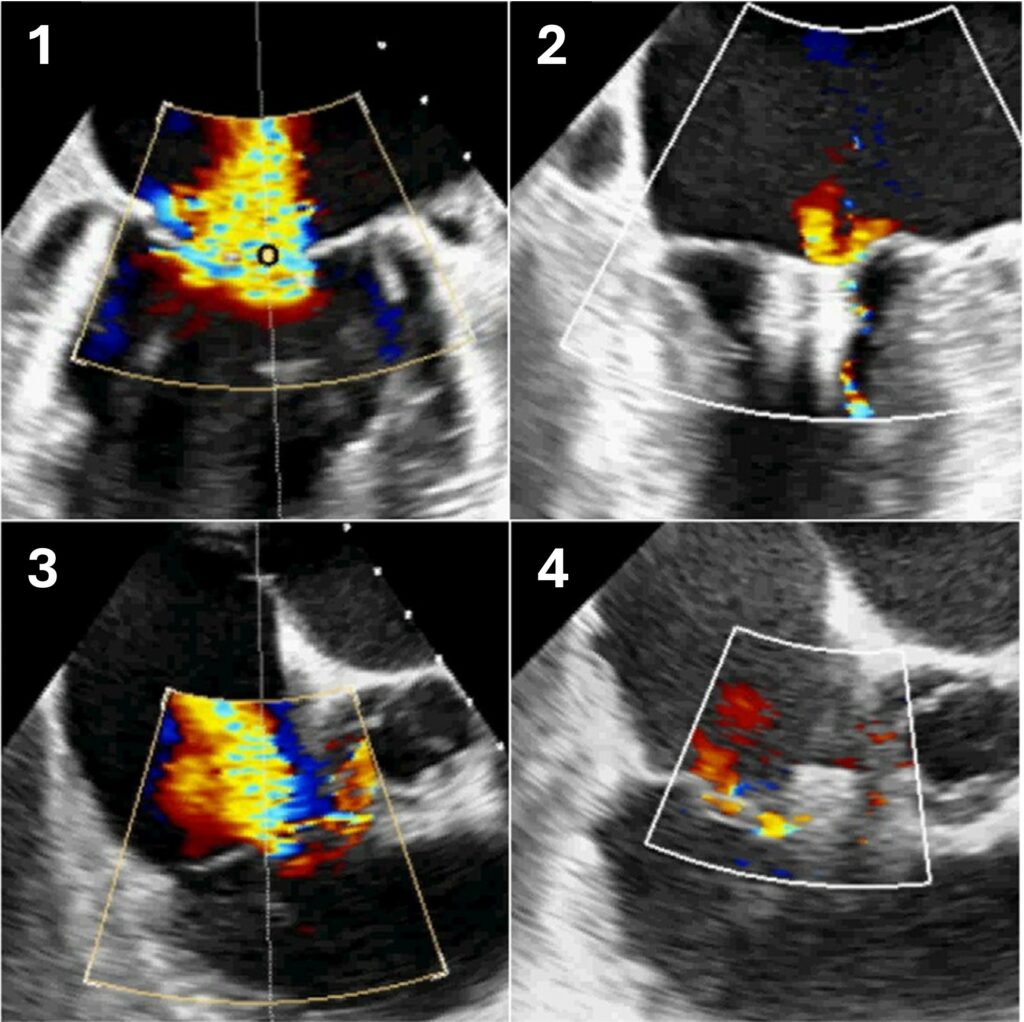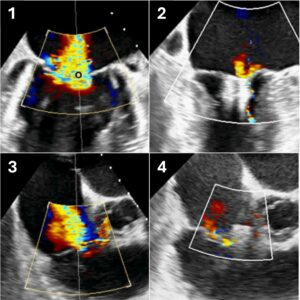CUHK
News Centre
CUHK-PWH team achieves breakthrough in using one single tricuspid catheter to repair both mitral and tricuspid valves for treating severe regurgitation
Mitral regurgitation or tricuspid regurgitation is a common valvular heart disease. Prevalence of mitral regurgitation in global population is about 2-3%, and one-third of them have tricuspid regurgitation at the same time. Combined mitral and tricuspid transcatheter edge-to-edge repair (combined TEER) is a treatment option shown to be beneficial to patients with symptomatic severe mitral and tricuspid regurgitation, but the current procedure in practice involves exchange of catheter systems. The Chinese University of Hong Kong (CUHK)’s Faculty of Medicine (CU Medicine) and Prince of Wales Hospital (PWH) pioneered the first-in-human series performing combined TEER for both mitral and tricuspid regurgitation using the same tricuspid catheter, proving that it is feasible to reduce the symptom without complications, and more efficient with minor technical modifications. Outcomes have been published as a research letter in the Journal of the American College of Cardiology (JACC): Cardiovascular Interventions.
Valve regurgitation may lead to heart failure
Heart valves open and close like gates to allow blood to flow in the correct direction through the heart chambers. When the mitral valve between the left chambers or the tricuspid valve between the right chambers does not seal and close properly, regurgitation happens and blood will leak in the wrong direction from the ventricle to the atrium. Valve regurgitation places an extra burden on the heart, lungs and other organs, and is a common cause of heart failure in elderly.
Professor Alex Lee Pui-wai in the Department of Medicine and Therapeutics at CU Medicine, explained, “Transcatheter intervention including TEER is a viable alternative to conventional open-heart surgery to treat mitral and tricuspid regurgitation, yet combined transcatheter mitral and tricuspid TEER is not commonly performed, as it requires two sets of catheters and devices to treat the mitral and tricuspid valves. We therefore looked into the feasibility of eliminating the complexity of the procedure while achieving a comparable clinical outcome.”
Novel approach reduces both regurgitation and procedural time
In the conventional procedure of combined TEER, doctors first have to insert the mitral catheter to deliver a device to repair the prolapse or flail gaps in the mitral valve, then replace the mitral catheter with the tricuspid catheter to repeat the same procedure for the tricuspid valve. The CUHK-PWH team experimented with an advanced approach, for the first time in human, by using only the tricuspid catheter to deliver devices to repair both the mitral and tricuspid valves. Seven procedures had been performed at PWH from June 2022 to December 2023 with promising results. In almost all cases, the patients’ mitral and tricuspid regurgitation reduced from severe to mild, with no procedural complications.
Dr Kent So Chak-yu, Associate Consultant in the Department of Medicine and Therapeutics at Prince of Wales Hospital and Clinical Assistant Professor (honorary) in the Department of Medicine and Therapeutics at CU Medicine, said, “Our first-in-human series suggests the new combined TEER approach using tricuspid catheter is feasible and safe. It can eliminate the need to exchange mitral catheter for tricuspid catheter after completion of mitral TEER, potentially reducing procedural time and bleeding associated with unnecessary device exchanges. We will continue to work with other global experts and hope this novel technique can be more widely adopted internationally and benefit more patients.”

The diagrams show the procedures of a combined transcatheter mitral and tricuspid TEER.
Pic 1: The tricuspid steerable guide catheter (SGC) is inserted into the left atrium (LA) to deliver a device to repair the prolapse or flail gaps in the mitral valve.
Pic 2: Mitral TEER is completed through the tricuspid catheter.
Pic 3: After completion of mitral TEER, the tricuspid SGC is pulled back to right atrium (RA).
Pic 4: Tricuspid TEER is performed.








